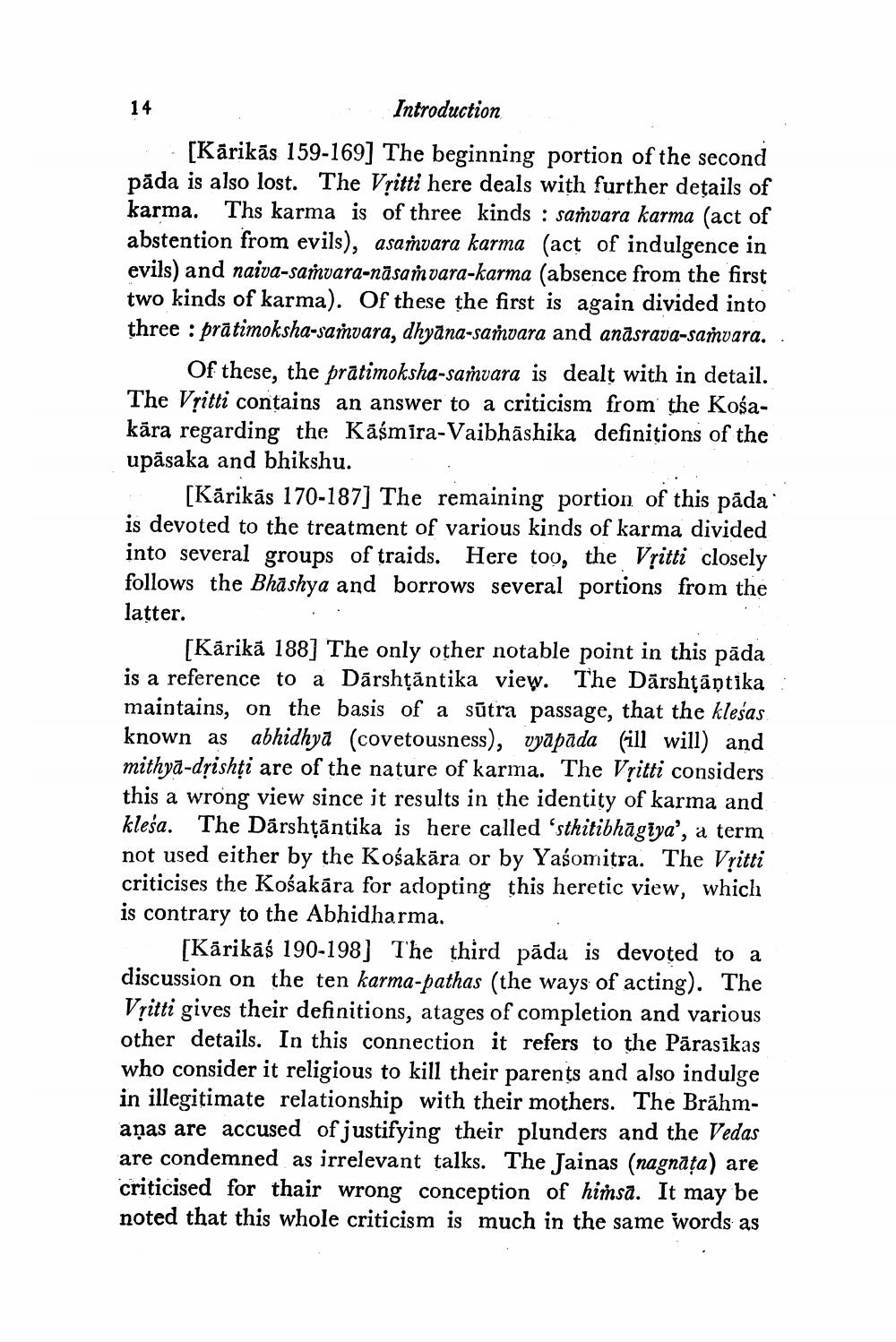________________ 14 Introduction [Karikas 159-169] The beginning portion of the second pada is also lost. The Vritti here deals with further details of karma. Ths karma is of three kinds : samvara karma (act of abstention from evils), asamvara karma (act of indulgence in evils) and naiva-samvara-nasamvara-karma (absence from the first two kinds of karma). Of these the first is again divided into three : pratimoksha-samvara, dhyana-samvara and anasrava-samvara. Of these, the pratimoksha-samvara is dealt with in detail. The Vtitti contains an answer to a criticism from the Kosakara regarding the Kasmira-Vaibhashika definitions of the upasaka and bhikshu. . on [Karikas 170-187] The remaining portion of this pada is devoted to the treatment of various kinds of karma divided into several groups of traids. Here too, the Vritti closely follows the Bhashya and borrows several portions from the latter. [Karika 188] The only other notable point in this pada is a reference to a Darshtantika view. The Darshtantika: maintains, on the basis of a sutra passage, that the klesas known as abhidhya (covetousness), vyapada (ill will) and mithya-drishti are of the nature of karma. The Vritti considers this a wrong view since it results in the identity of karma and klesa. The Darshtantika is here called 'sthitibhagiya', a term not used either by the Kosakara or by Yasomitra. The Vritti criticises the Kosakara for adopting this heretic view, which is contrary to the Abhidharma. [Karikas 190-198] The third pada is devoted to a discussion on the ten karma-pathas (the ways of acting). The Vritti gives their definitions, atages of completion and various other details. In this connection it refers to the Parasikas who consider it religious to kill their parents and also indulge in illegitimate relationship with their mothers. The Brahmanas are accused of justifying their plunders and the Vedas are condemned as irrelevant talks. The Jainas (nagnata) are criticised for thair wrong conception of himsa. It may be noted that this whole criticism is much in the same words as




